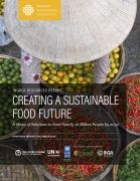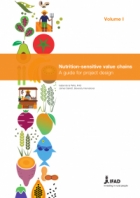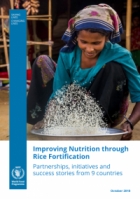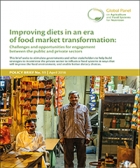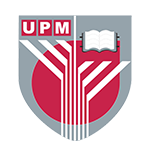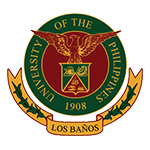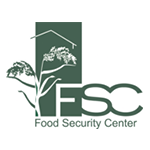Harvested Resources
Food Security and Nutrition Roadmap of the Bangsamoro Autonomous Region in Muslim Mindanao
World Food Programme
The Food Security and Nutrition Roadmap of BARMM is product of collaboration between the Bangsamoro regional government and WFP. It is the region’s blueprint towards a self-reliant, food secure, and resilient Bangsamoro.
1 Oct 2020World Food Programme
Indonesia: COVID-19: Economic and Food Security Implications (3d Edition)
World Food Programme
Key Messages In the second quarter of 2020, the Indonesian GDP contracted by 5.32% year-on-year (Y-o-Y), the most significant decline since 1999. The GDP dropped by 4.19% compared to the first quarter of 2020. The government expects next year’s budget deficit to amount to IDR 971.2 trillion, 5.5% of GDP, given the need to further boost the economy and provide social and healthcare assistance. Household consumption expenditure, contributing 58% of total GDP, decreased by 5.5% (Y-o-Y)…
1 Oct 2020World Food Programme
Macro Analysis of COVID-19 - Threats to Food Security and Livelihoods in Asia and the Pacific, June 2020
The COVID-19 pandemic is set to severely derail development gains in Asian and Pacific nations. It compounds pre-crisis levels of food insecurity and malnutrition with job losses, supply chain disruptions, and declines in revenue from key exports and remittances. Globally, WFP predicts that the number of people facing acute food insecurity around the world will almost double to 270 million, including 121 million newly food insecure due to COVID-19. Afghanistan, Nepal, Timor-Leste and the…
1 Jun 2020World Food Programme
COVID-19 Economic and Food Security Implications for Indonesia - 3rd edition August 2020
United Nations World Food Programme
The COVID-19 pandemic continues affecting the lives and livelihoods of millions of people globally. In addition to the health-related impact, the outbreak is also triggering an economic downturn affecting the world’s poor and food insecure population. Indonesia continues to be severely affected by COVID-19. The pandemic affects food security and nutrition, particularly for vulnerable groups with already scarce resources to cope with the pre-crisis situation, including those in the informal…
20 Aug 2020United Nations World Food Programme
ICrops Seminar Series: Understanding Food Security Situation in the Philippines
Domingo E. Angeles
The Institute of Crop Science Seminar Series Speaker: Dr. Domino E. Angeles 27 September 2019
Creating a Sustainable Food Future: A Menu of Solutions to Feed Nearly 10 Billion People by 2050
Tim Searchinger, Richard Waite, Craig Hanson, Janet Ranganathan, Patrice Dumas and Emily Matthews
By 2050, nearly 10 billion people will live on the planet. Can we produce enough food sustainably? The synthesis report of the World Resources Report: Creating a Sustainable Food Future shows that it is possible – but there is no silver bullet. This report offers a five-course menu of solutions to ensure we can feed everyone without increasing emissions, fueling deforestation or exacerbating poverty. Intensive research and modeling examining the nexus of the food system, economic…
1 Dec 2018
Nutrition-sensitive value chains: A guide for project design - Volume 1
International Fund for Agricultural Development
This publication has been produced to fill a key knowledge gap in the emerging field of value chains for nutrition by providing guidance on how to design nutrition-sensitive value chain (NSVC) projects, with a particular focus on smallholder producers. This guide provides validated step-by-step guidance for NSVC project design, relevant not only for IFAD but for development actors in general, and for organizations working in agriculture and rural development in particular. INTRODUCTION …
23 Oct 2018
Improving Nutrition through Rice Fortification: Partnerships, initiatives and success stories from 9 countries
World Food Programme
Untapped potential Food fortification – adding vitamins and minerals to commonly eaten foods - has proven to be an effective strategy in reducing micronutrient deficiencies. Countries in North America and Europe have been fortifying foods since the 1920s, which led to the virtual eradication of nutrition-related diseases like goiter, rickets, beriberi, and pellagra. But today 2 billion people across the world still suffer from vitamin and mineral deficiencies, as nutritious foods are still…
1 Oct 2018
Improving diets in an era of food market transformation: Challenges and opportunities for engagement between the public and private sectors
IFPRI-Compact2025
How can public and private sector links be more effective to improve diets? A new policy brief from the Global Panel on Agriculture and Food Systems for Nutrition sets out six priorities for action: (1) encouraging investments in food sector small and medium-sized enterprises, (2) promoting consumer demand for healthy diets, (3) public incentives for appropriate action in the private sector, (4) managing risks, (5) building trust, (6) and providing reliable and supportive…
Measuring Rice Yield from Space: The Case of Thai Binh Province, Viet Nam
An innovative data fusion technology, which combines two freely available satellite data sources, is used to map paddy area and estimate yield in Thai Binh Province, Viet Nam. Traditional methods for estimating rice yield rely on field data, which are time-consuming and expensive to collect. Significant cloud coverage in Southeast Asia limits the availability of cloud-free satellite images to serve as an alternative to field data. This paper presents an innovative data fusion technique which…
30 Mar 2018Asian Development Bank





